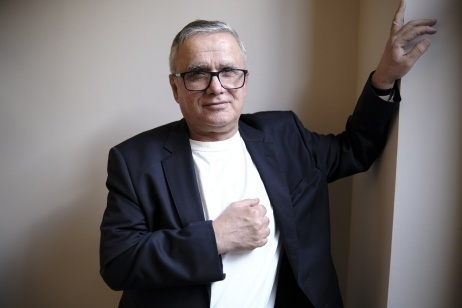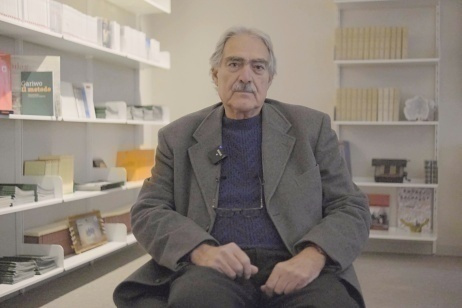
The ruins of Palmyra
The conflict between the IS militias and the Syrian army for the conquest of Palmyra casts the shadow of destruction on one of the most important archeological sites worldwide, carried out by the fundamentalists, just like what happened in other monumental sites in Iraq and Syria. Nevertheless, the international alert issued to save ancient Palmyra, UNESCO “World Heritage”, seems to ignore the condition of the new city inhabitants, who paid the IS offensive with more than 60 civil victims (over 200 total victims), and are in danger still.
This is the stand of Eva Ziedan, Syrian activist and archeologist, who has been working since 2013 with an international organization in Beirut on a project linked to the humanitarian tragedy and contributing to the news website “SyriaLebanon”. Graduated from the University of Damascus, with a PhD in the University of Udine, between 2006 and 2010 she has been involved in several missions in the main archeological sites in Syria, among which the desert region on the West of Palmyra.
In the interview, the archeologist denounces the negative consequences of Western media indifference about the population’s fate; at the end, she admits her loss of hope, because she knows that “nothing will be done, as nothing has been done for five years”.
What’s the importance of the site of Palmyra for the Syrian cultural and historical heritage?
Palmyra is one of the most important ancient cities still preserved. The first certified settlements date back to paleolithic age, and Canaanites, Arameans, Nabateans, Arabs and Romans passed through that area. Its Arab name Tadmor means, in the Aramaic language, “the wonder” or, according to a different interpretation, “postern, point of guard”, whereas the classical name, Palmyra, with its reference to the palms surrounding the city, seems to originate from the latin translation for tamar, the Semitic word for the date palm, chosen for its assonance with the ancient toponym Tadmur.
It thrived in the First and Second century and it became a commercial capital between East and West, up until it made its entrance in history during the reign of queen Zenobia, who managed to get in control of almost all Syria, reaching the Egyptian borders - in that time, coins had her effigy on. Emperor Aurelian ended her reign, after besieging the city in 272 until her yield, when she was brought to Rome as a war trophy.
The most important ruins still preserved are the Temple of God Baal, the colonnade, the theatre, the Agorà, the necropolis standing out with its “tower graves”, and Diocletian court with its thermal baths. Palmyra became part of the “World Heritage” sites list edited by UNESCO in 1980. In 2013 it was inserted in the list of the World Heritage sites in danger list. For a Syrian, it is not only a fundamental part of the archeological heritage, but also part of our identity, the same identity which is now going vanishing.
What’s the city current situation like?
In these days Palmyra gained great attention because of the risk of damage the site could face with the conquest by the IS. But, before saying what the risk could be for the site with the IS arrival, I would like to shift the attention to a very important fact.
I am an archeologist, but in this moment I am not working in this field. And, even if I cannot stand the thought of Palmyra ruins, where I used to go on trip while I was a child at school, where I worked and walked in the desert picking up material of any era, I would like to remember, first, the people of Palmyra!
People still live in the city and the arid steppe around it: if the city will be attacked, people will die of hunger and thirst; if the city becomes the setting of the conflict, people will die. This is as terrible as the risk for the artistic and historical heritage, because the injustice that crosses a land remains the sand, and people will never forget it.
Which consequences for Palmyra could have the occupation by IS?
Palmyra has been in danger for two years, it is not a matter of the last few days. Militarizing the archeological ruins, means to expose the site to the risk of destruction in the case of the conflict between the two belligerent parts. If ISIS gets into Palmyra, there could be the risk - according to some - of a repetition of the destructions occurred in Iraq, at the Ninive Museum, and in the sites of Nimrud and Hatra. Despite this, it must be said that Palmyra is not the unique important Syrian site in the IS territories. The Islamic State destroys when it wants to flaunt devastation, selling what it doesn’t want to be seen.
At times I am afraid of the media impact, because the preventive alarms - without being able to do nothing for real to protect the sites - could encourage Isis to destroy. I’d like to make an example: after the destruction of Ninive sculptures by the Islamic State, with the consequent western media alarm campaign for the sites, without though reserving the same attention to the daily massacres of the people, a very negative reaction against heritage rose from many Syrians themselves.
How could it be possible to impede the destruction of this site?
I am sorry, but I have nothing to say about this, because I know that nothing will be done, as nothing has been done for five years. More than 12 millions Syrians need basic humanitarian help: it is half the population as it was before the conflict; more than 7 million are intern dispersed people, more than 4 millions are refugees, more than 300 thousands are under attack in 40 areas all around Syria, and 300 archeological sites have been damaged in the last four years.
I lost hope and I confess that, as a human being and an archeologist (once feeling so free to consider every place in the world as my country), I now hide my hate against everything with difficulty, against international heritages as well, and the different treatments reserved for them according to the cases.






